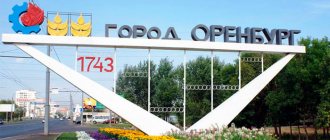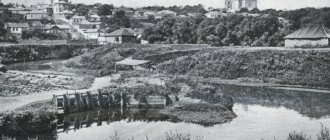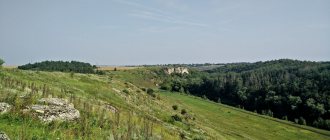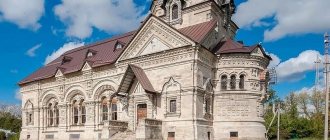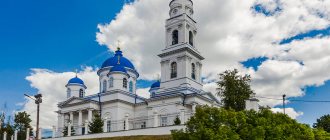- Reports and messages
- Miscellaneous
- Lipetsk city
The city of Lipetsk spreads its borders on the banks of the Voronezh River.
It is located in the central part of the Black Earth Region, 400 km. southeast of the Russian capital. The city was founded at the beginning of the 18th century by Peter I as a settlement and had a single industrial facility - an iron parts plant. Lipetsk became a city under Catherine II. In 1781, the city got its own symbol - a rowing with an image of a linden tree, symbolizing prosperity. In January 1954, Lipetsk acquired the status of a regional center. Currently, the city is a major center for the rolling of steel produced by the Novolipetsk Iron and Steel Works, a manufacturer of household appliances from the famous company Indesit, materials for construction, juices and mineral water. The city is located in a forest-steppe zone with a temperate climate. The average temperature in winter is -7 degrees, in summer about +20 degrees.
Lipetsk ranks fourth in the list of the most environmentally polluted cities. This indicator is influenced by the presence of a large number of industrial enterprises. The city was included in the Russian national project “Ecology”, according to which it is planned to reduce air emissions by 22% by 2024.
Lipetsk is one of the oldest resort places in Russia. Local mineral water sources contain sodium salts, large amounts of magnesium, iron, and calcium, which are used by the city’s medical and health institutions to restore health.
The city has many attractions of historical value. Of particular interest are the pre-revolutionary estates that have been preserved in Lipetsk in their original form. Now they house cultural objects of the city: the Art Museum “Master’s House”, dedicated to V.S. Sorokin, an art gallery, and the Wedding Palace.
A special place in the city is occupied by the Nativity Cathedral, erected in 1842 by decree of Ekaterina Alekseevna. Construction of the temple began in 1791; the long construction period is explained by a fire during the construction period. The temple houses the especially revered Icon of the Mother of God “Lipetsk”, which saved the city during the terrible cholera epidemic in 1831. Since 1991, the cathedral has become a cathedral. The city's population is just over 510 thousand people. Over the past fifty years, the population has more than quadrupled. The area of the city is about 330 sq. km. and is divided into four administrative districts.
Option No. 2
One of the largest and second largest cities in the Black Earth Region is Lipetsk. Located in the forest-steppe zone with a temperate continental climate. Like any other settlement, the city of Lipetsk was founded a long time ago. There are several versions on this matter. Thus, one of the Lipetsk local historians believes that earlier, instead of the city of Lipetsk, there was a small settlement. It was located on a high slope and was protected on all sides by impenetrable slopes. In this village there was a prince's house around which artisans lived. Other local historians believe that this settlement was formed in the 9th century. Defensive structures and princely power, in their opinion, were absent here. How the area of today's Lipetsk was populated is described in chronicles in the first half of the 17th century. At that time, on this land there was the village of Malye Studenki Lipskie. Residents of Ryazan gradually began to come here.
At the end of the 17th century, iron ore began to be mined here and factories were built. At the beginning of the 18th century, thanks to the construction of iron factories for the needs of the Russian fleet and army, the village, no longer with a small population, received the status of a city and was renamed the Lipskiye Zavody settlement. After seventy years of existence in this status, the Lipskiye Zavody settlement is renamed Lipetsk and acquires a new position in the Tambov province - a county town. From this time on, he begins to transform. The Small Public School and the Nativity Cathedral become the main attractions of the young city. The Nativity of Christ Cathedral continues to delight all residents and guests today with its beauty.
In 1800, the doctor of the city of Lipetsk, Vander, proved the healing properties and miracle cures of local mineral water, thanks to which the city began to attract many people. Lipetsk is turning into a resort city. Along with the development of resort services, new plants and factories are being built in the city.
In pre-revolutionary times, Lipetsk, with a population of 20 thousand, already had a large number of factories and enterprises operating. During the difficult years of the Great Patriotic War, as in many other Soviet cities of that time, all enterprises in the city of Lipetsk switched to defense orders. The production of mines, grenades, shell casings, incendiary briquettes, and soles for mortars brought great assistance to the front.
1954 is an important event in the history of the city; Lipetsk becomes a regional center. This marked the beginning of a new stage of development - the construction of regional institutions, paving roads, large-scale landscaping and street lighting, the launch of the first passenger airline, the construction of factories: mechanical, reinforced concrete products, foundry, cement, metallurgical.
During the crisis of the 90s, many enterprises found themselves in a critical situation. But despite the difficult times, a refrigeration facility was built in 1993, and a washing machine plant with the famous “Indesit” brand was built in 2004.
Today this city is the industrial center of the European part of Russia with a population of half a million people.
Geography of the Lipetsk region
The region is located in the central zone of the European territory of Russia, at a distance of 370 km south of Moscow. In the west of the region there is a hill with a height of up to 262 meters above sea level, which in many places is dissected by river valleys, gullies and ravines. In the east there is a low-lying plain with an altitude of up to 170 meters above sea level. It is a plain with many saucer-shaped depressions, the so-called depressions. Almost the entire river flow belongs to the Don basin.
The territory of the Lipetsk region is covered with forest-steppe. Its main part is plowed, and natural vegetation is preserved only on the slopes of ravines and river valleys. Forest cover occupies 7.6% of the entire territory. Logging in these forests is prohibited due to their ecological importance. Among the forests, pine and oak forests are the most common. Birch, aspen and alder forests are less common.
Popular message topics
- City of Khimki
One of the largest urban associates of Moscow is the city of Khimki. Its geographical location is on the banks of the Moscow Canal. Beginning of urban formation: November 13, 1851. In the same year, a railway station was opened, - Steppe Eagle
The Steppe Eagle is one of the largest species of birds of prey; this species of bird belongs to the family Accipitridae, and the genus Orlov. - Rocks Rocks
are a very interesting subject for research and study. These are the substances that make up the earth's crust. Rocks are composed primarily of minerals or rock fragments.
Project on the topic “My hometown is Lipetsk” for 2nd grade
Goal of the project: As part of studying the subject “The World Around You,” talk about your hometown, its attractions and memorable places.
Find information about his story and share it with your classmates. Tell schoolchildren about Lipetsk and why I love it. Prepare a report and presentation in the form of a photo story. Project plan:
- Location on the country map.
- History and symbols.
- Lipetsk in the present.
- Attractions.
- Places of military glory.
- Conclusion.
- An example of a finished photo story-presentation.
Features of the geography and climate of the Lipetsk region
The location of the region and the relief features determine the geographical distribution of meteorological quantities across its territory and seasons. The coldest month is January. This is due to the region’s remoteness from sea areas and the presence of a significant continental climate. In a maritime climate, the minimum temperature is usually shifted to February. In the western half of the region, cyclones coming from the Atlantic are observed more often than in the east. Therefore, the winter there is milder. In the southwest of the region, the average January temperature is -9.7 °C, and in the northeast -10.9 °C. When arctic air invades, severe frosts also occur.
The warmest month of the year is July. In the northwest it is cooler +18.5 °C than in the southeast. The annual temperature range is 30 degrees, and in some places even more. First of all, the continental climate is determined by it. The most continental climate is the Oka-Don lowland, and on the Central Russian Upland (within the region) it is somewhat milder.
Precipitation patterns
Precipitation is influenced by factors such as relief, distance from the Atlantic Ocean, latitude, and features of regional atmospheric circulation. The amount of precipitation increases from the southeast to the northwest - from 450 mm per year to 550 mm, respectively. This pattern is explained by a decrease in the frequency of anticyclones in the northwestern direction and an increase in the frequency of cyclones, as well as by the features of the terrain.
There is less rainfall in winter than in summer. The fewest of them occur in February – 20-25 mm. The maximum occurs in July - 60-85 millimeters.
Climate
The climate of the Lipetsk region corresponds to the temperate continental type with well-defined seasons. Winters are moderate, with developed snow cover. In January the average temperature is -10 °C. Summer is warm and quite long. In July, the average temperature is +20-21 °C. In the southeast it is higher than in the northwest. The average temperature for the year is +4.1-5.1 °C. The absolute minimum of 39.6 °C was recorded in the city of Gryazi. The highest temperature value was recorded in the village. Kon-Kolodez - +39 °C.
The amount of precipitation per year is 450-550 mm. Most of them fall from April to October. Snow cover is established with the beginning of the calendar winter, and melts at the end of March. Its average depth is 25-35 cm. The average duration of the cover is 130 days a year. It is at its greatest thickness at the end of February - beginning of March - on average 18-33 cm. The growing season lasts over 180 days a year.
Winds often blow in the area. In summer, western, northwestern and eastern ones most often occur, and in winter – southwestern, western and southern ones.
In general, the climate of this region is well suited for growing crops such as sugar beets, potatoes, vegetables, grains, and fruits.
Flag
The flag of Lipetsk is made in the form of a rectangular panel in gold color. The ratio of its sides is 2:3. It depicts elements of the coat of arms. The height of the hill is 1/10 of the width of the flag, and the tree is 7/10 of the same size.
The artistic composition was entered into the State Heraldic Register of the Russian Federation under No. 1795. Approved on February 27, 1997 (again on August 16, 2005).
The opinion of Lipetsk residents themselves about their city
Reviews on the Internet can be found very contradictory: some claim that it is the best place to live (the climate is excellent, you can find a good job, and you can afford to buy an apartment). Visitors say the opposite: there are problems with work, housing is expensive, people are not very friendly (and this is putting it mildly).
And yet people leave their homes and come here for permanent residence.
Lipetsk residents themselves cite the following characteristics of the city as advantages:
- Wide and spacious avenues and streets.
- The road surface is good, but after winter every year the roads need repairs.
- Thanks to its good modern architecture, the city looks well-maintained.
- There are many fountains and flower beds everywhere, which are constantly looked after by special services.
- There are many small businesses offering a variety of services, from shoe repair to organizing various events.
The Lipetsk region ranks 8th in the ranking of quality of life in the regions of the Russian Federation
The disadvantages of both local residents and visitors include the following facts:
- The city was built chaotically, widely scattered throughout the territory.
- Difficult terrain. A wild ravine runs through the entire city, making development of the territory very difficult. But this fact causes a double opinion; many people like the unevenness of the relief, which gives it originality.
- Presence of large industrial enterprises. But thanks to this, Lipetsk became the most important industrial center, taking second place after the capital. In addition, large factories provide attractive infrastructure and ample opportunities for economic growth. Thanks to large enterprises, the standard of living of city residents has also increased significantly.
- Lack of ancient sights.
Note : the city began to be built up in the middle of the last century, so there really are no old buildings or other attractions here. But there is something else - nature. Two nature reserves have been opened in the Lipetsk region. One of them, Galichya Gora, was listed in the Guinness Book of Records as the smallest in the world.
There is another important natural attraction here - open springs with healing mud and sodium chloride-sulfate water. The springs were discovered 200 years ago, and on their basis a resort was opened at that time, which is still in operation today.
Those who find themselves in the city usually make their first trip to these life-giving waters.
Watch the video: Sights of Lipetsk.
Hymn
I admire you, city, your scope is noble. Among the linden trees - handsome and young - You stand on five hills. The birds' song spilled out, I'm walking on my path... The faces of fellow countrymen brighten from a date with you.
Chorus:
And Novolipetsk metal throws glare into the sky. Here the sovereign Peter the Great Fleet of Russia raised. The residents of Lipetsk value you, as they value a shrine, Orthodox, majestic, Lipetsk-grad, close to their hearts.
I am involved in your affairs, You are the source of my beginnings. You are both my pain and my joy, and my parent’s pier! Rainbow arches will rise above the expanse of squares. And there is no more beautiful gift than the recognition of people.
Chorus:
And Novolipetsk metal throws glare into the sky. Here the sovereign Peter the Great Fleet of Russia raised. The residents of Lipetsk value you, as they value a shrine, Orthodox, majestic, Lipetsk-grad, close to their hearts. My native land has become destiny, You are my homeland, Lipetsk is mine.
Words by A. Shestopalov, music by V. Melnik.
The anthem is pending approval.
Automobile highways
Two federal highways pass through Lipetsk:
- P119 is a federal highway with a total length of 395 km. The highway connects 2 cities - Tambov and Orel. The route passes through the following cities: Lipetsk, Livny, Yelets. Road surface: asphalt.
- A133 is a highway that has the status of federal significance. The length of the route is 45 km. The road starts from the M4 Don highway and runs to Lipetsk. Road surface: asphalt.
